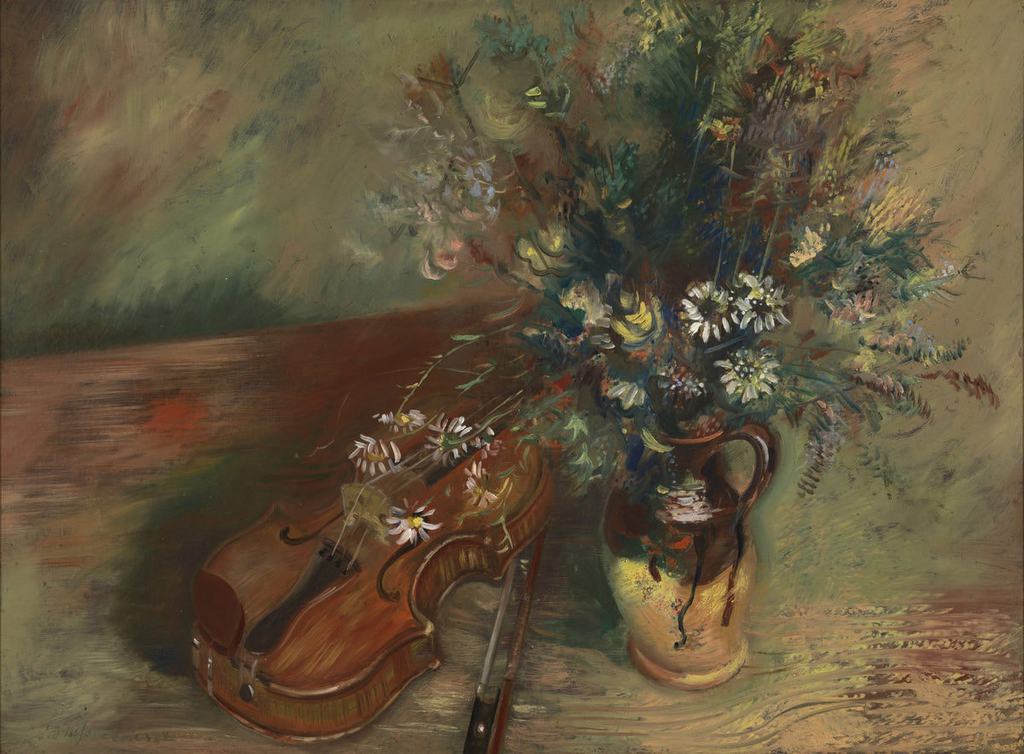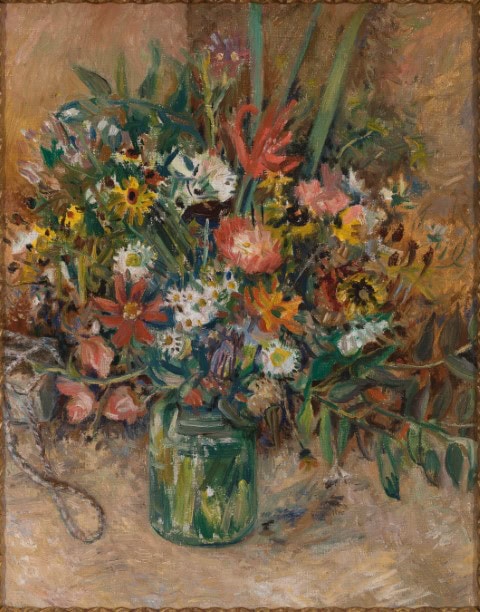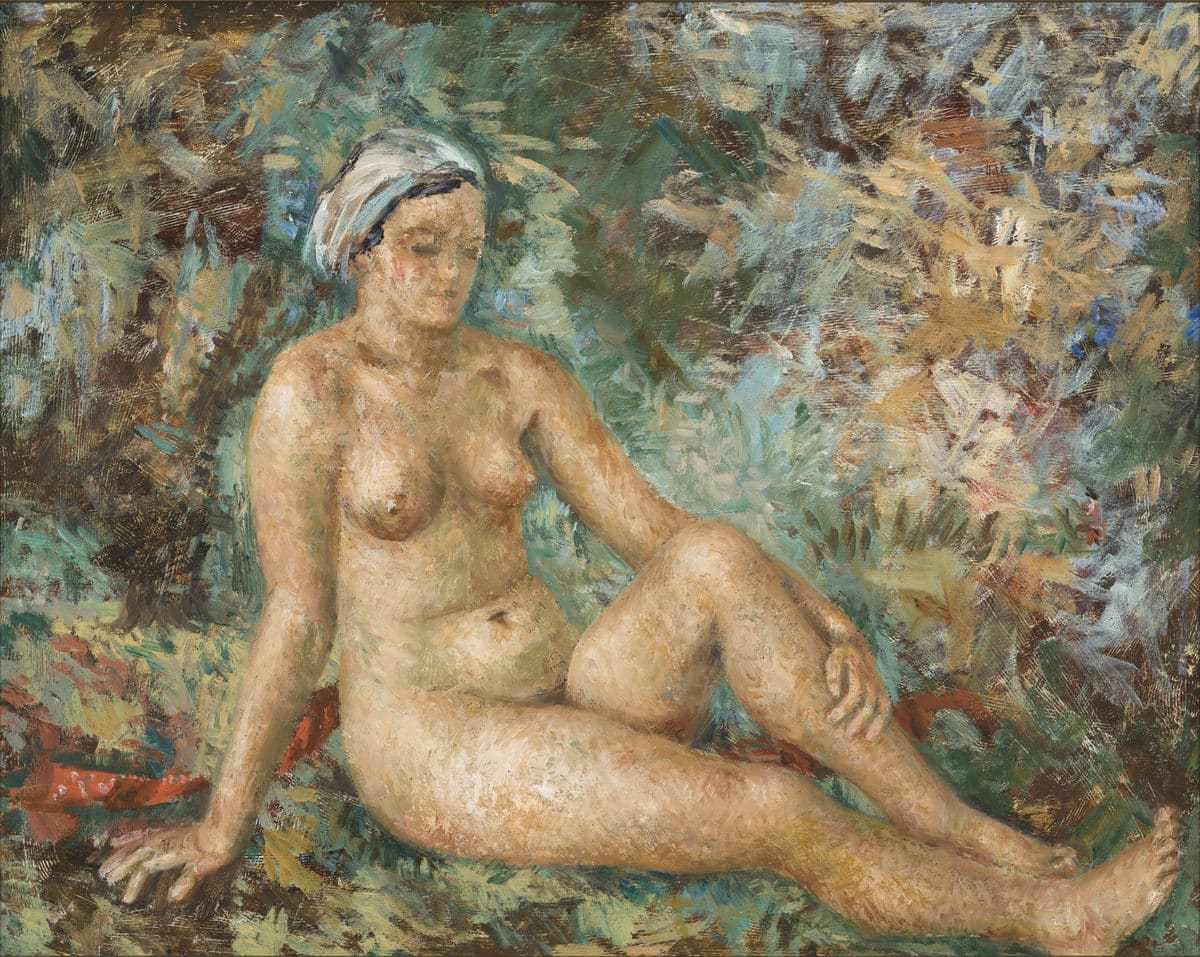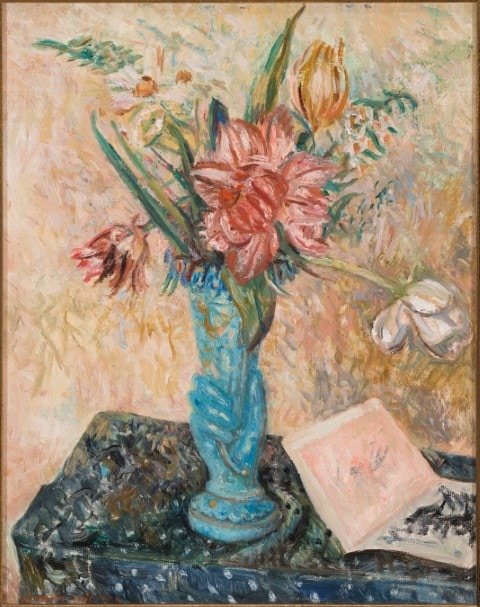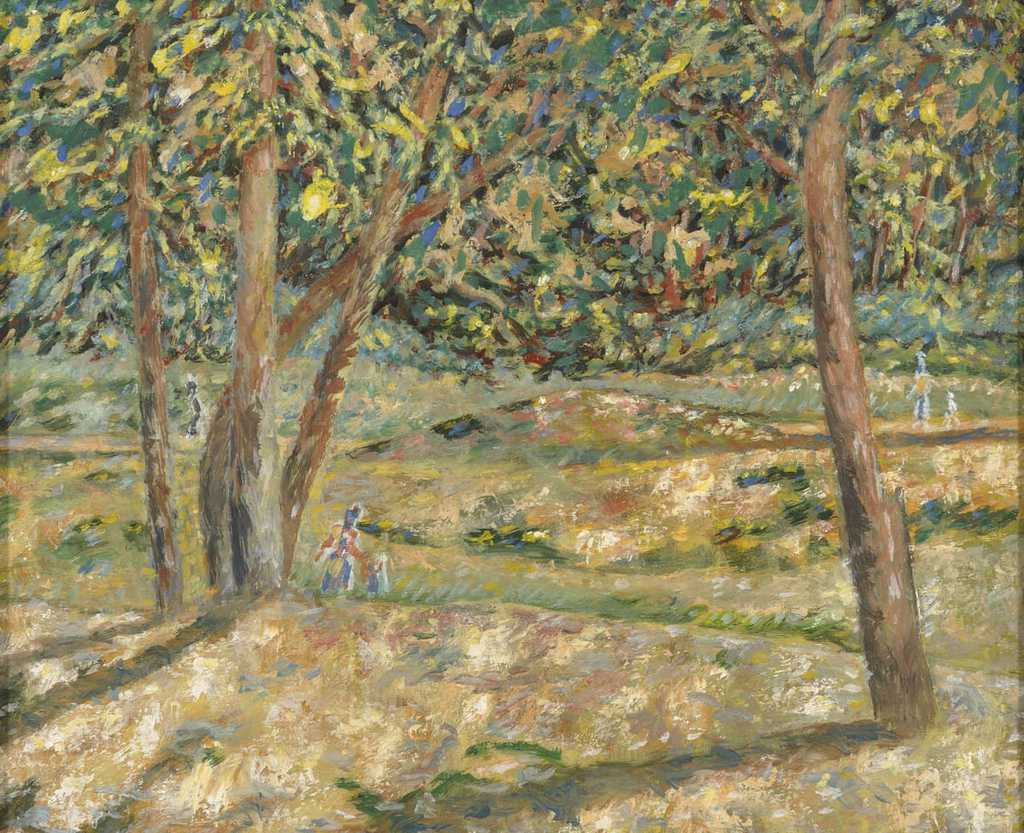Adamson-Eric (1902–1968)
Adamson-Eric studied in Germany, Italy, Spain, France and elsewhere. Even though he was generally very productive, the period immediately prior to 1933 was more leisurely in Adamson-Eric’s creative work: his father had died a few years before, then he himself came down with the measles and went on vacation in Spain to treat his health. Adamson-Eric returned to Estonia in 1932 and with the exception of a trip to Greece in 1934, he remained living permanently in Estonia. The generally accepted position is that his previous creative phase ended then and a new phase began.
Sten Karling sees his still lifes of that period not as part of that turn but rather as taking his previous style to its highest level: “A series of still lifes from the following years are maintained in alternating faded yellow and golden grey colouring. These canvases have an established form and structure, and they present the artist to us as a well-equipped, mature master.”
Adamson-Eric was not active in painting at all at the end of the 1950’s and the beginning of the 1960’s. Mainly, his work in applied arts is known, yet rather few paintings. It is possible that this can be explained by the hardships he had endured in the preceding years: sackings, condemnation, ejections and a heart attack. True, his most difficult years were already behind him. Adamson-Eric was a professor once again and now knew how to paint with his left hand as well.
It has been noticed that it is just now that a new period of ascent began in his creative work. He once again painted natural settings, yet altogether more exuberantly and more richly coloured than before, focusing primarily on subjects from Lohusalu, where he went to recuperate his health. “These are narrow, intimate segments from nature – a tiny group of trees, a few pine trees, a path through the woods, a little house at the edge of the woods,” wrote Leo Soonpää.

